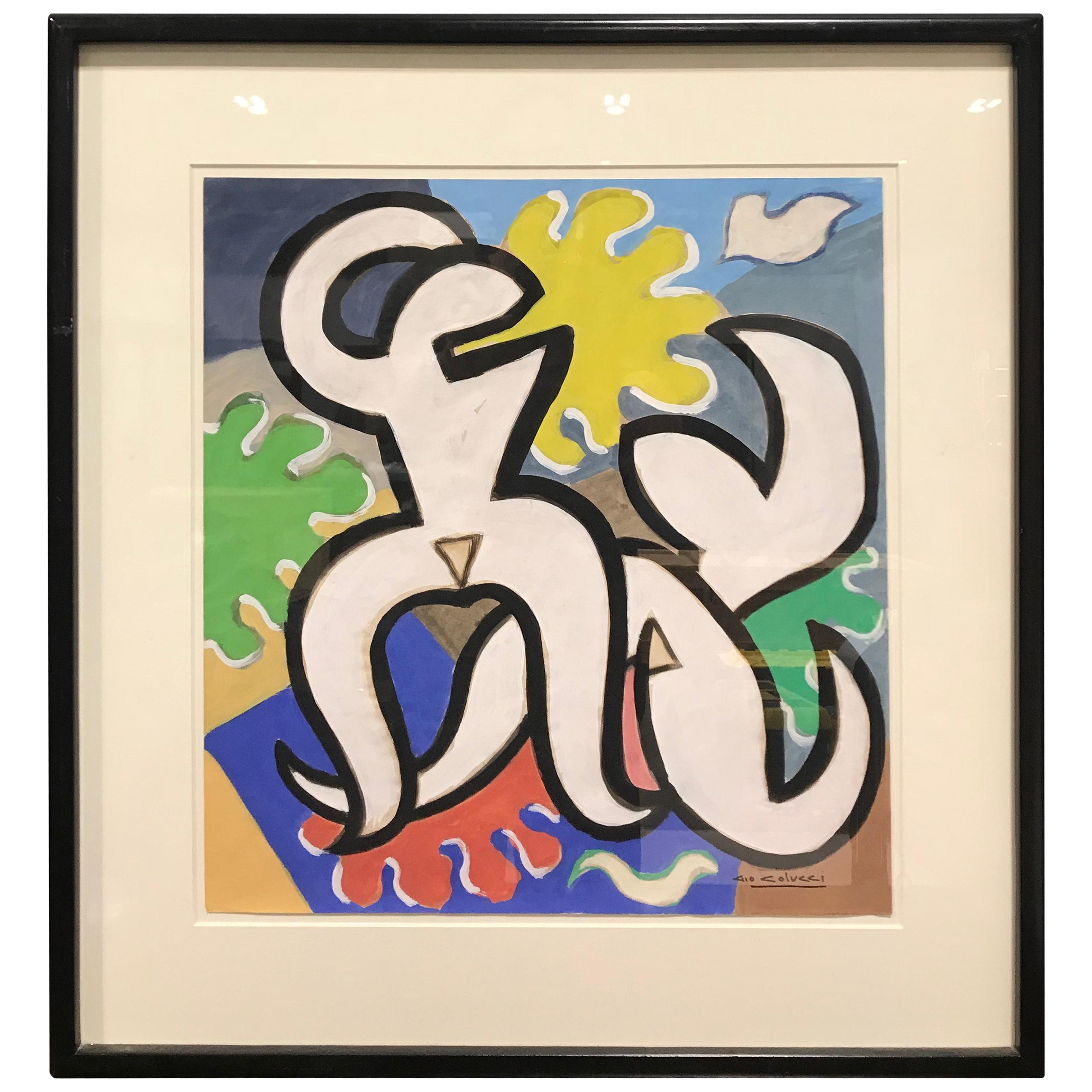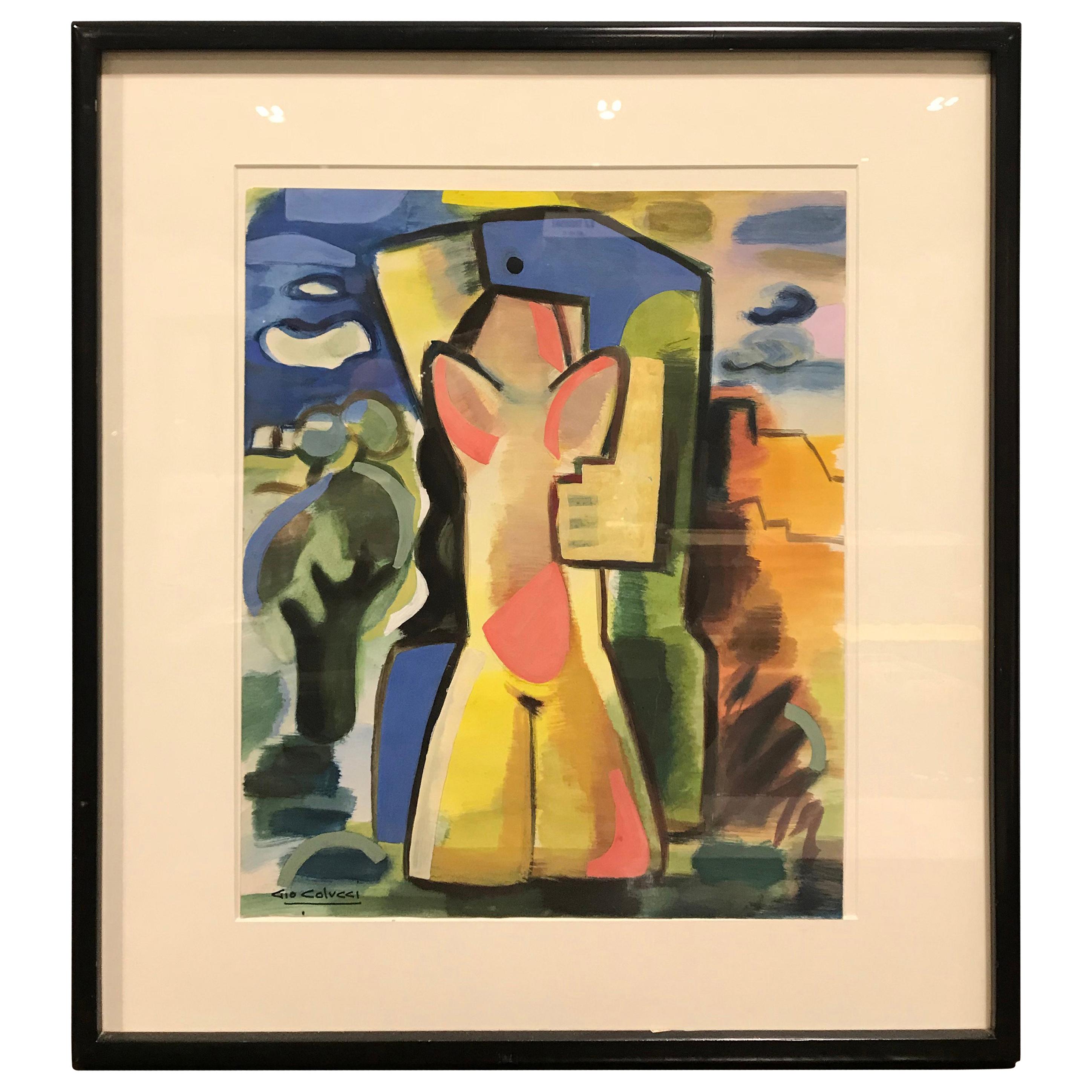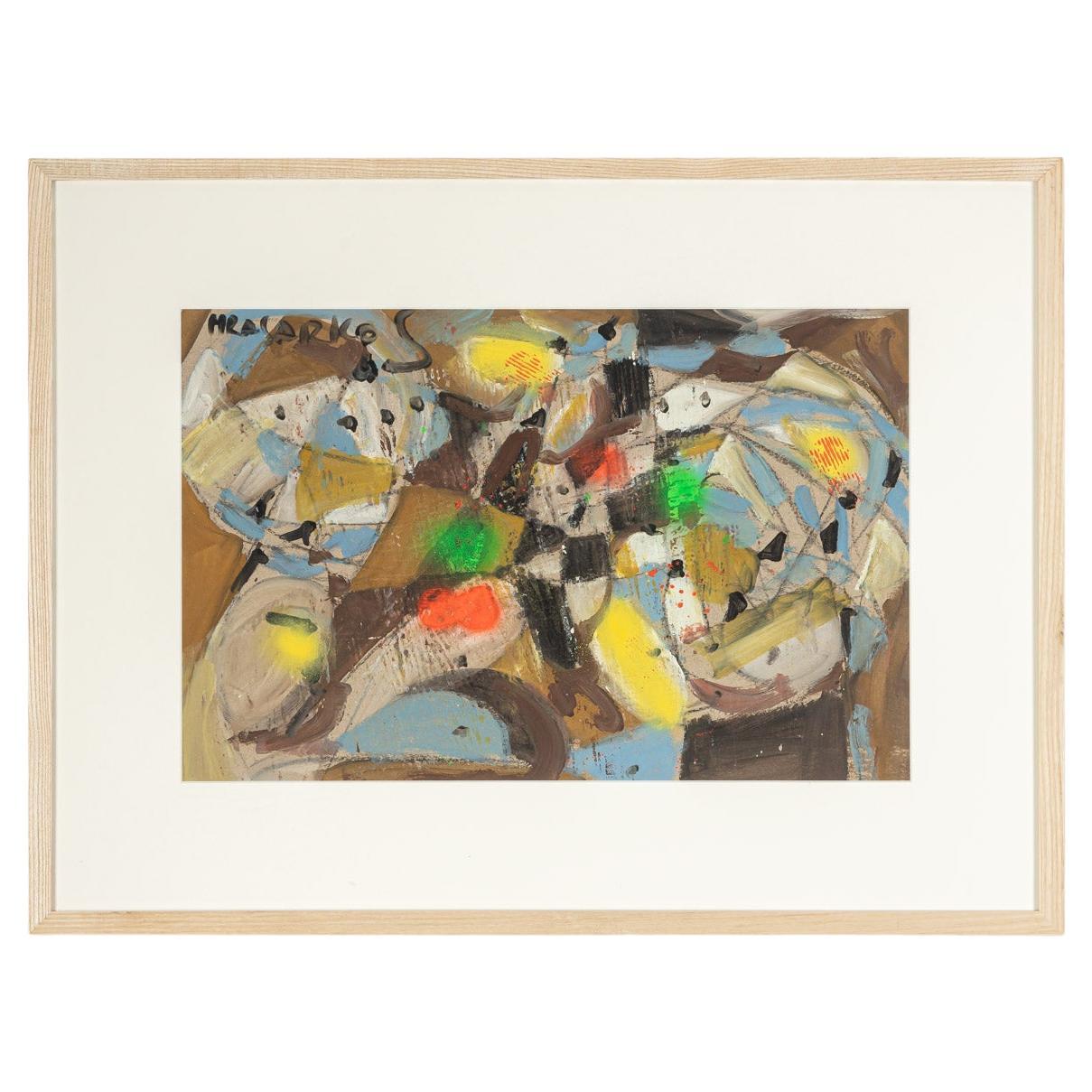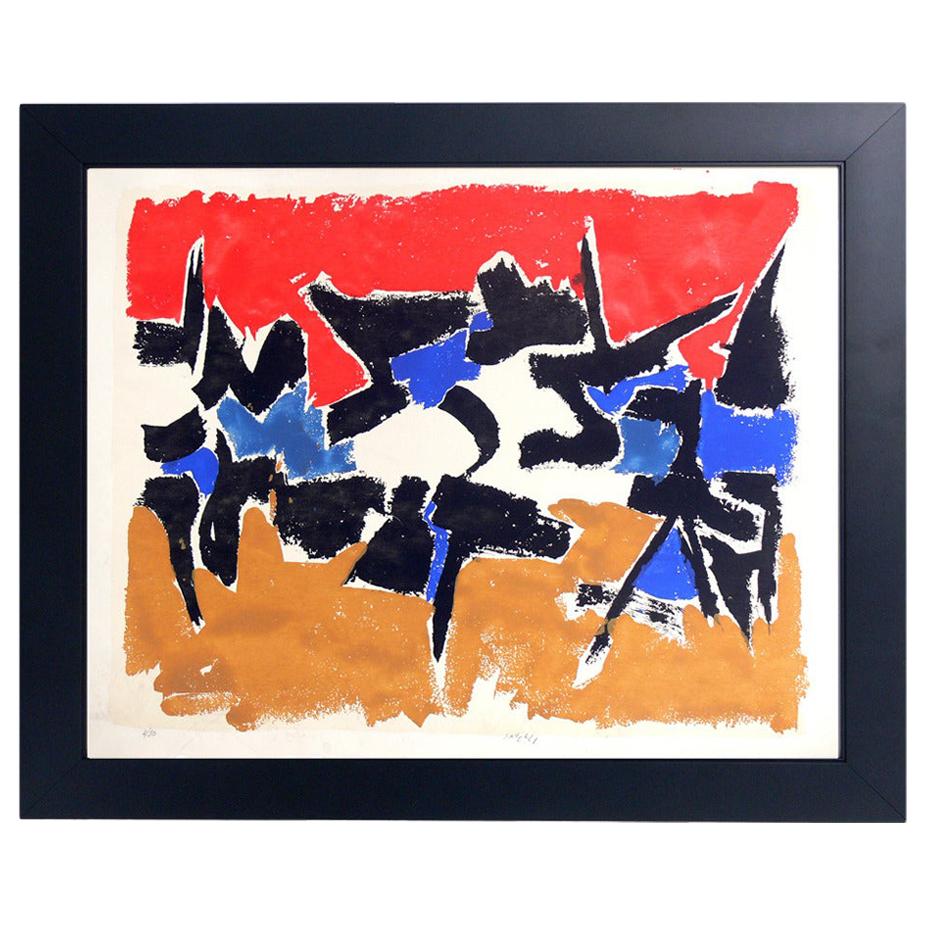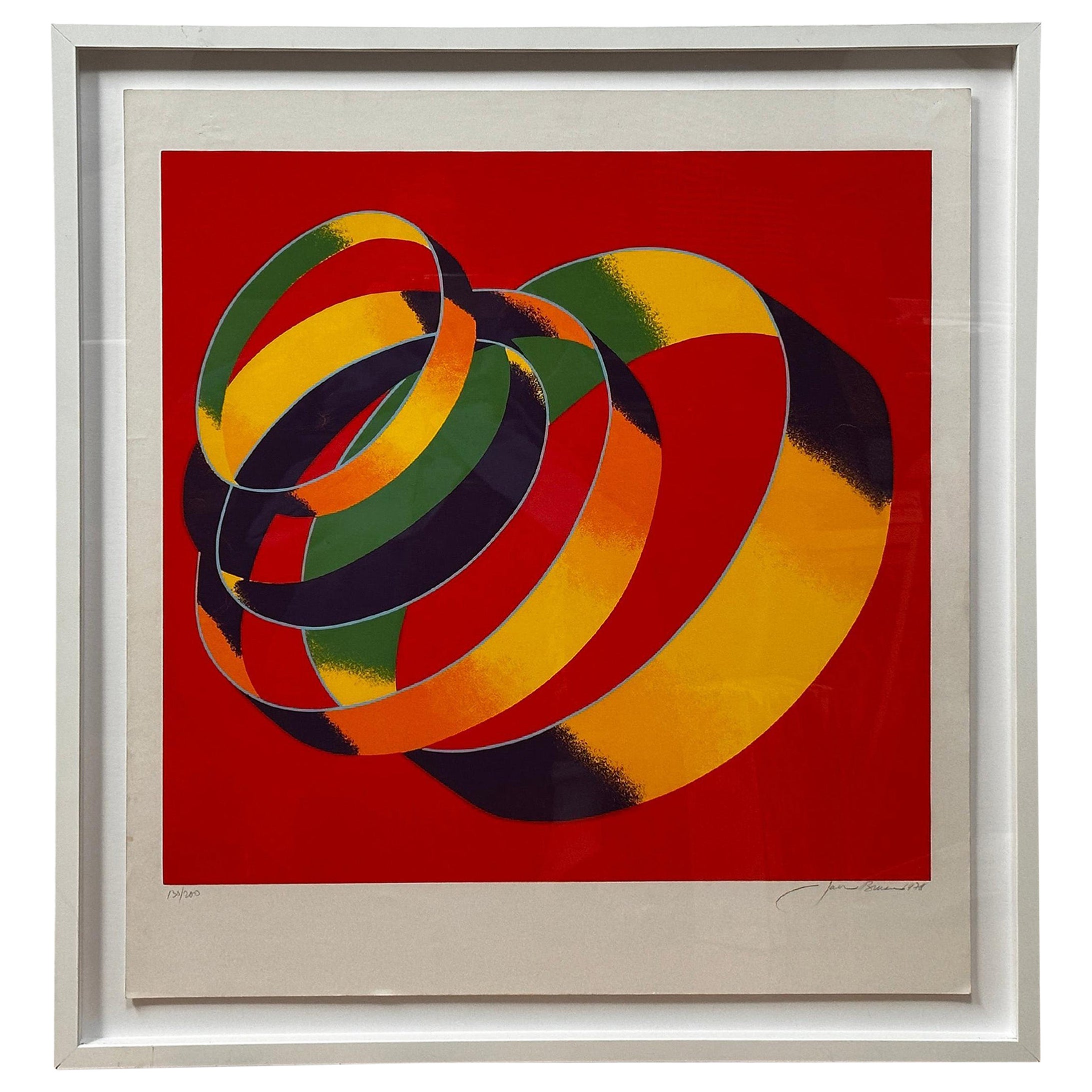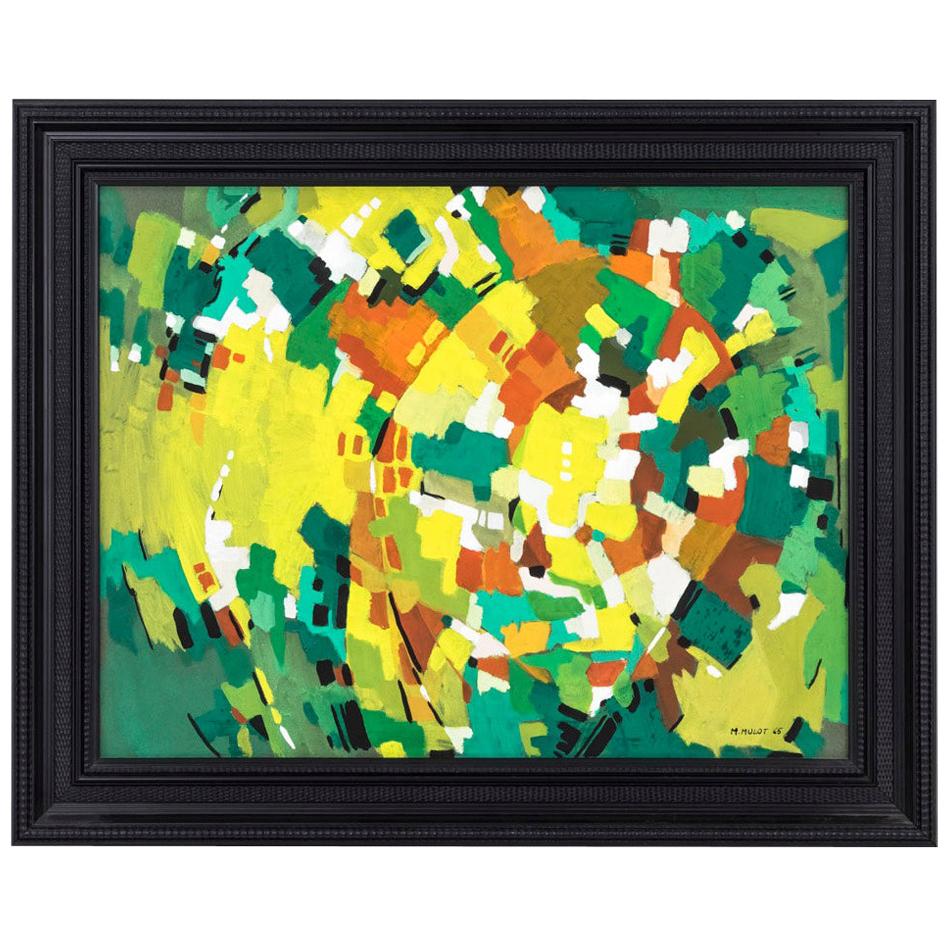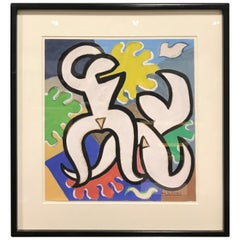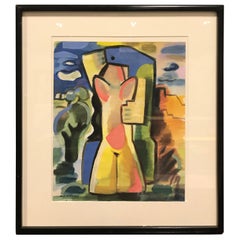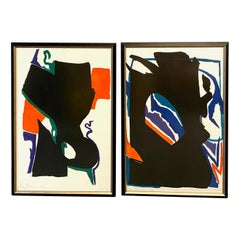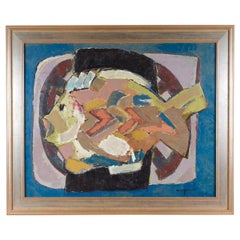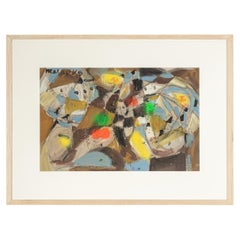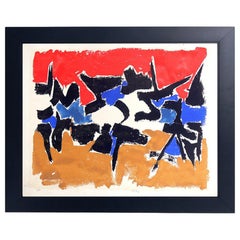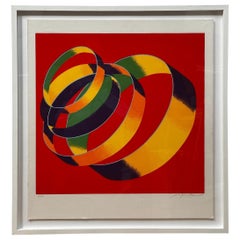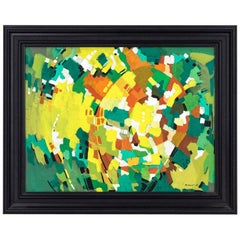Colorful Abstract Gouache "Serpentine Shapes" by Gio Colucci
About the Item
- Creator:Gio Colucci (Artist)
- Dimensions:Height: 32.5 in (82.55 cm)Width: 26.5 in (67.31 cm)Depth: 2 in (5.08 cm)
- Materials and Techniques:
- Place of Origin:
- Period:
- Date of Manufacture:1950
- Condition:dimensions of the work H:25.5 W:19.5.
- Seller Location:Montreal, CA
- Reference Number:1stDibs: LU875113599442
Gio Colucci
Gio Colucci, also known in France as Geo Colucci, was a painter, engraver, illustrator, ceramist and sculptor. From 1921, he exhibited his engravings in various salons. He worked with French publishers specializing in the illustrated books of high bibliophilia, and he also delivered a series of remarkable prints for texts by Barbey d'Aurevilly, Pierre Loti, Guy Maupassant, Octave Mirbeau, etc. In 1956, Colucci and Gino Severini founded the School of Italian Art in Paris. A major retrospective on his work took place in New York in 1959, when he also exhibited at the Quadrennial in Rome. Colucci died in 1974.
- ShippingRetrieving quote...Shipping from: New York, NY
- Return Policy
More From This Seller
View AllVintage 1950s Italian Paintings
Paper
Vintage 1950s Italian Paintings
Paper
1990s American Paintings
Paint
Vintage 1960s French Paintings
Vintage 1970s American Paintings
Acrylic
Vintage 1950s French Paintings
Paint
You May Also Like
Vintage 1980s Armenian Paintings
Ash
Vintage 1950s Italian Mid-Century Modern Prints
Paper
Vintage 1970s American Post-Modern Paintings
Paper
Vintage 1960s French Modern Paintings
Canvas
Vintage 1960s Swedish Modern Prints
Late 20th Century American Mid-Century Modern Paintings
Paint
Read More
Carlo Bugatti’s 1902 Chair Is a Masterful Cultural Mash-Up
The Italian maker’s unmistakable, highly eclectic style drew on influences from around the globe.
This Alain Delon–Designed Table Is Almost as Handsome as He Was
Fans of the French film star may be surprised to learn that he had a flair for furniture with sleek lines and disco-era flash.
